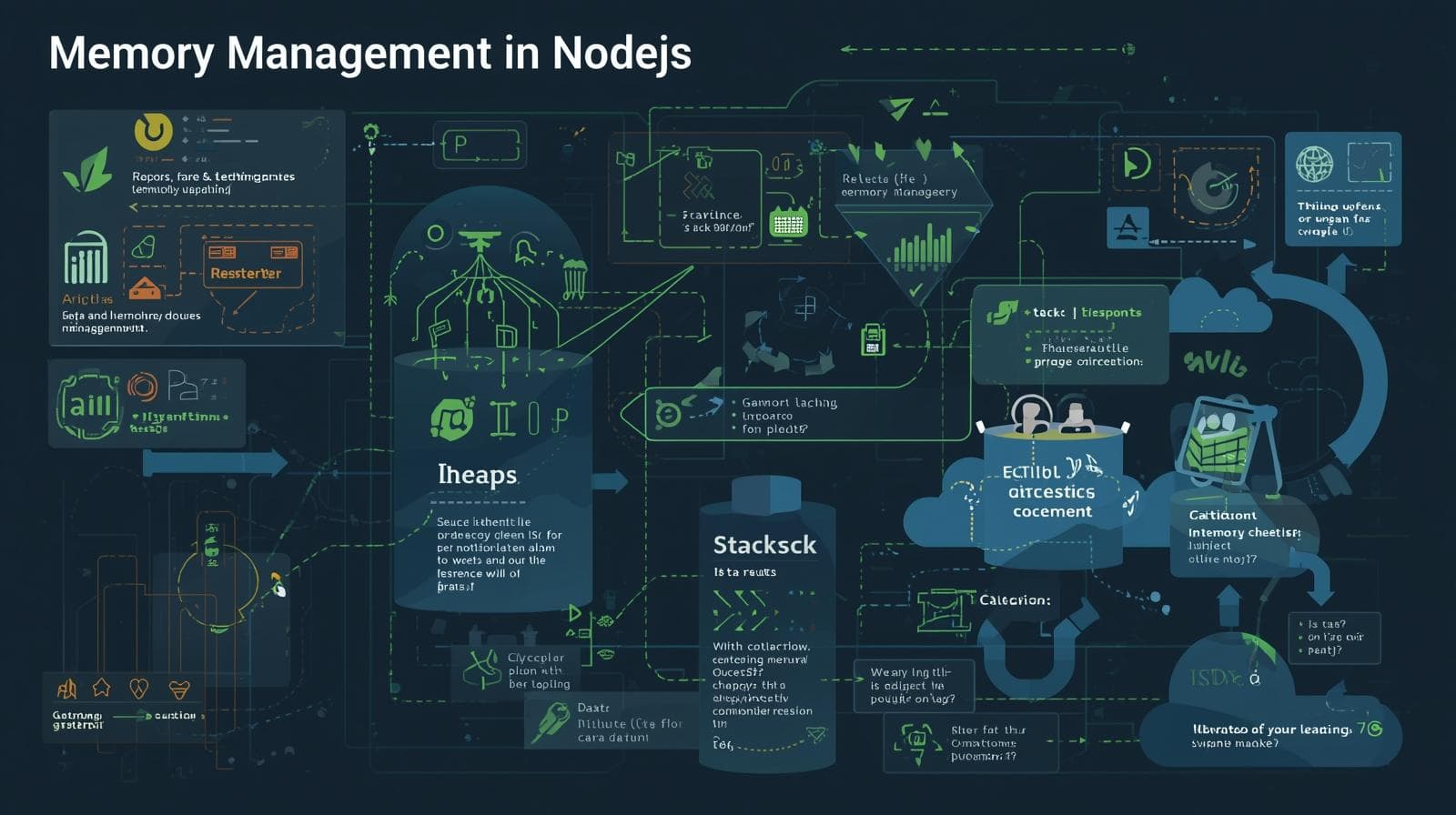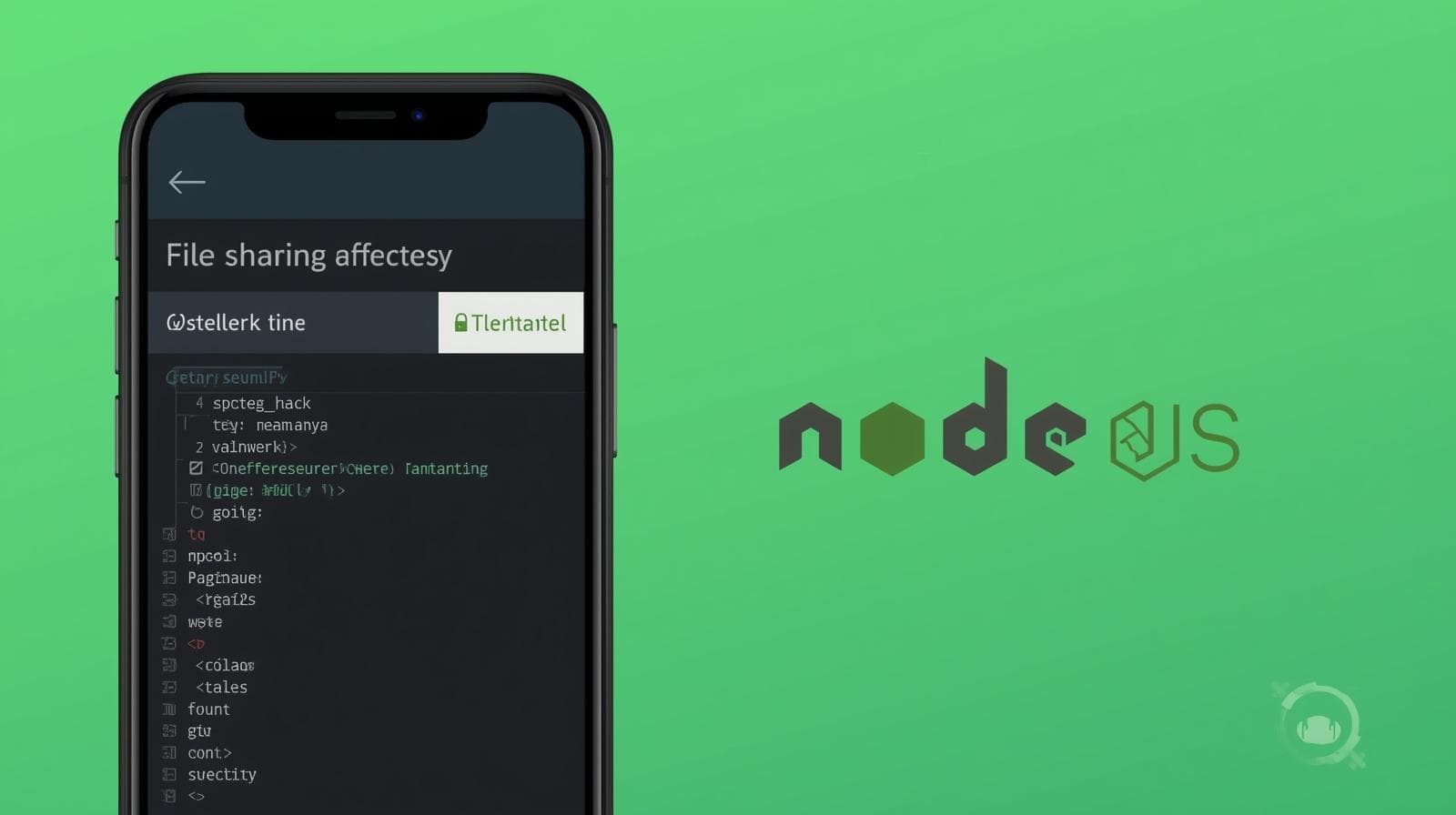Master Test-Driven Development (TDD) with Node.js: A Complete Guide for Robust Code

Dive deep into Test-Driven Development (TDD) in Node.js. Learn the Red-Green-Refactor cycle, build a real-world REST API with Jest, understand best practices, and write bug-resistant code.

Master Test-Driven Development (TDD) with Node.js: A Complete Guide for Robust Code
Stop Flying Blind: How Test-Driven Development with Node.js Will Transform Your Code
Let's be honest. How many times have you finished writing a "perfect" piece of Node.js code, only to find it breaks something else in a way you never expected? You then spend the next few hours—or days—in a frantic loop of debugging, patching, and crossing your fingers.
What if there was a way to code not just faster, but with more confidence? A methodology that acts like a blueprint, a safety net, and a design tool all rolled into one.
That methodology is Test-Driven Development (TDD).
In this deep dive, we're not just going to talk about TDD. We're going to get our hands dirty and do TDD. We'll build a simple Node.js REST API from the ground up, using the Red-Green-Refactor cycle, and explore why this practice is a cornerstone of professional software engineering. By the end, you'll see your code not as a fragile house of cards, but as a robust, well-tested fortress.
What is Test-Driven Development (TDD)? Beyond the Jargon
At its heart, TDD is a software development process, not just a testing technique. It flips the traditional programming model on its head. Instead of writing code and then tests for that code, you write the tests first.
The cycle is beautifully simple and is known as Red-Green-Refactor.
Red: Write a failing test. You haven't implemented the feature yet, so the test should fail. This confirms the test is working and that you're testing the right thing.
Green: Write the minimum amount of code necessary to make the test pass. Don't worry about perfect architecture or "clean code" at this stage. Just make it work.
Refactor: Now, with the safety net of a passing test, you can clean up your code. Improve its structure, remove duplication, and apply best practices without the fear of breaking the functionality.
This cycle, repeated for every small piece of functionality, ensures your code is tested from the very beginning and that every line you write has a purpose.
Why Bother? The Tangible Benefits of TDD
Fewer Bugs: Catching errors at the moment of creation is infinitely cheaper than finding them in production.
Better Design: Writing tests first forces you to think about your code's API and how it will be used before you implement it. This naturally leads to more modular, loosely-coupled, and maintainable code.
Living Documentation: Your test suite becomes a always-up-to-date specification of what your code is supposed to do. New developers can look at the tests to understand the system's behavior.
Fearless Refactoring: With a comprehensive test suite, you can make significant changes to your codebase with the confidence that your tests will catch any regressions.
Increased Confidence: Deploying code that is covered by tests is a profoundly different experience. It’s the difference between hoping it works and knowing it works.
Setting Up Our Node.js TDD Environment
Before we start the cycle, let's set the stage. We'll be building a simple API for managing a list of books.
Prerequisites
Node.js (v14 or higher) and npm installed.
A code editor (VS Code is highly recommended).
Step 1: Initialize the Project
bash
mkdir tdd-book-api
cd tdd-book-api
npm init -yStep 2: Install Dependencies
We'll use Jest as our test runner. It's a powerful, developer-friendly testing framework by Facebook.
bash
npm install --save-dev jestStep 3: Configure Jest
Open your package.json and add a test script:
json
{
"scripts": {
"test": "jest",
"test:watch": "jest --watchAll"
}
}npm test will run your tests once, while npm run test:watch will run them in watch mode, re-executing whenever you save a file—perfect for TDD!
Step 4: Project Structure
Let's create a simple structure:
text
tdd-book-api/
├── __tests__/
│ └── bookService.test.js
├── src/
│ └── bookService.js
├── package.json
└── README.mdThe TDD Cycle in Action: Building a Book API
We'll start by building the core business logic—a BookService—using TDD. This service will handle creating, reading, updating, and deleting books. We'll use a simple in-memory array for persistence to keep things focused.
Feature 1: Fetch All Books
Step 1: RED - Write a Failing Test
In __tests__/bookService.test.js, write your first test.
javascript
const BookService = require('../src/bookService');
// A fresh instance before each test to ensure isolation
let bookService;
beforeEach(() => {
bookService = new BookService();
});
describe('BookService - getAllBooks', () => {
test('should return an empty array when no books are added', () => {
// Arrange
// (Our beforeEach has set up bookService)
// Act
const books = bookService.getAllBooks();
// Assert
expect(books).toEqual([]);
});
});Now, run the test: npm test.
It fails! And that's a good thing. You'll see an error like Cannot find module '../src/bookService'. We haven't created it yet. We are in the Red phase.
Step 2: GREEN - Write the Minimal Code
Create src/bookService.js and write the simplest code to make the test pass.
javascript
class BookService {
getAllBooks() {
return [];
}
}
module.exports = BookService;Run npm test again.
It passes! We are in the Green phase. We have a working, albeit simple, feature.
Step 3: REFACTOR - Is there anything to improve?
The code is already as simple as it can be. No refactoring needed yet. On to the next feature!
Feature 2: Add a New Book
Step 1: RED - Write a Failing Test
Back in bookService.test.js, add a new test.
javascript
describe('BookService - addBook', () => {
test('should add a new book to the collection', () => {
// Arrange
const newBook = { id: 1, title: 'The TDD Bible', author: 'Jane Doe' };
// Act
const addedBook = bookService.addBook(newBook);
const allBooks = bookService.getAllBooks();
// Assert
expect(addedBook).toEqual(newBook);
expect(allBooks).toContainEqual(newBook);
expect(allBooks).toHaveLength(1);
});
});Run npm test. The new test fails because bookService.addBook is not a function. Red.
Step 2: GREEN - Make it Pass
Update src/bookService.js.
javascript
class BookService {
constructor() {
this.books = []; // We now need a place to store books
}
getAllBooks() {
return this.books;
}
addBook(book) {
this.books.push(book);
return book;
}
}
module.exports = BookService;Run npm test. Both tests pass! Green.
Step 3: REFACTOR - Clean Up
The tests are passing, but let's think. Our test data (id: 1) is a bit magic. Let's make the test more robust.
javascript
test('should add a new book to the collection', () => {
// Arrange
const newBook = { title: 'The TDD Bible', author: 'Jane Doe' }; // removed hardcoded id
// Act
const addedBook = bookService.addBook(newBook);
const allBooks = bookService.getAllBooks();
// Assert
// We don't know the id, so we check for a subset of properties
expect(addedBook).toMatchObject(newBook);
expect(addedBook).toHaveProperty('id'); // Ensure an id was added
expect(allBooks).toContainEqual(addedBook); // Use the returned object
expect(allBooks).toHaveLength(1);
});We're now testing the behavior (a book with an id is added) rather than the implementation (a book with id: 1). This is a more resilient test. Run the tests again to ensure they still pass.
Feature 3: Get a Book by ID
Step 1: RED
Write the test first.
javascript
describe('BookService - getBookById', () => {
test('should return the book if a valid id is provided', () => {
// Arrange
const bookToFind = bookService.addBook({ title: 'Find Me', author: 'Author' });
// Act
const foundBook = bookService.getBookById(bookToFind.id);
// Assert
expect(foundBook).toEqual(bookToFind);
});
test('should return undefined if an invalid id is provided', () => {
// Arrange & Act
const foundBook = bookService.getBookById(999); // Non-existent ID
// Assert
expect(foundBook).toBeUndefined();
});
});Run npm test. The tests fail. Red.
Step 2: GREEN
Implement the getBookById method.
javascript
class BookService {
// ... previous code ...
getBookById(id) {
return this.books.find(book => book.id === id);
}
}Run npm test. All tests pass! Green.
Step 3: REFACTOR
The code looks clean. Let's move on.
We'll continue this cycle for updateBook and deleteBook. The pattern is the same: Red, Green, Refactor.
Leveling Up: TDD for a REST API with Express.js
Now, let's see how TDD applies to building the web layer—the actual HTTP endpoints. We'll use Supertest to test our Express.js routes.
Step 1: Install Dependencies
bash
npm install express
npm install --save-dev supertestStep 2: Create the API Test and Implementation
Let's TDD the GET /api/books endpoint.
Step 1: RED
Create __tests__/api.test.js.
javascript
const request = require('supertest');
const app = require('../src/app'); // We'll create this next
describe('GET /api/books', () => {
test('should respond with an empty array of books initially', async () => {
const response = await request(app)
.get('/api/books')
.expect('Content-Type', /json/)
.expect(200);
expect(response.body).toEqual([]);
});
});Run npm test. It fails because src/app doesn't exist. Red.
Step 2: GREEN
Create the minimal Express app in src/app.js.
javascript
const express = require('express');
const app = express();
app.get('/api/books', (req, res) => {
res.json([]);
});
module.exports = app;Run npm test. The test passes! Green.
Now, let's integrate our BookService. We'll modify the test and the app to use the service.
Updated Test (api.test.js):
javascript
const request = require('supertest');
const app = require('../src/app');
describe('GET /api/books', () => {
test('should respond with all books from the service', async () => {
// We are now testing that the API layer correctly calls the service layer.
const response = await request(app)
.get('/api/books')
.expect(200);
// We expect the structure, not necessarily hardcoded data.
expect(Array.isArray(response.body)).toBe(true);
});
});Updated App (src/app.js):
javascript
const express = require('express');
const BookService = require('./bookService');
const app = express();
const bookService = new BookService();
app.use(express.json()); // To parse JSON request bodies
app.get('/api/books', (req, res) => {
const books = bookService.getAllBooks();
res.json(books);
});
// We would continue this for POST, GET /:id, etc.
module.exports = app;By building the API this way, we've ensured that our web layer is tested independently of the underlying business logic. This is a key principle of good architecture.
Real-World Use Cases and Best Practices
TDD isn't just for toy projects. It shines in complex, real-world scenarios.
Onboarding New Developers: A comprehensive test suite allows new team members to make changes confidently, knowing they haven't broken existing features.
Legacy Code Integration: Got a messy, untested codebase? Start applying TDD to any new feature or bug fix you work on. Gradually, you'll build a safety net around the legacy code.
API Contract Testing: When your frontend and backend teams work separately, TDD ensures the backend API conforms to the agreed-upon contract, preventing integration nightmares.
TDD Best Practices to Live By
Write the Simplest Test First: Start with the happy path, then add tests for edge cases and error conditions.
Test Behavior, Not Implementation: Your tests should care about what the code does, not how it does it. This makes your tests resilient to refactoring.
Keep Tests Fast and Isolated: Slow tests discourage running them. Each test should be independent and not rely on the state from a previous test.
Use Descriptive Test Names:
getBookById_WithInvalidId_ReturnsUndefinedis much clearer thantest1.Don't Test the Framework: You don't need to test that Express or Jest works. Trust your dependencies. Focus on testing your unique logic.
Frequently Asked Questions (FAQs)
Q: Doesn't TDD slow you down?
A: It feels slower at the beginning. However, it drastically reduces time spent on debugging and fixing bugs later in the development cycle. In the long run, it's a significant net gain in productivity and code quality.
Q: How do I test code that involves databases or external APIs?
A: You use mocking. Tools like Jest have excellent mocking capabilities to simulate your database or a third-party API. This keeps your tests fast and isolated. For example, you would mock your database model instead of hitting a real database.
Q: Is 100% test coverage the goal?
A: No. The goal is meaningful test coverage. Chasing 100% can lead to useless tests that don't verify important behavior. Focus on testing complex business logic, not simple getters and setters.
Q: Can I use TDD with other Node.js testing frameworks?
A: Absolutely! While we used Jest, the TDD cycle is framework-agnostic. Mocha/Chai is another popular combination that works perfectly with TDD.
Conclusion: Embrace the Red-Green-Refactor Rhythm
Test-Driven Development is more than a technique; it's a discipline. It forces you to think before you code, to design with the user in mind, and to build a safety net that empowers you to improve your code continuously.
Starting with a failing test (Red), making it pass in the simplest way possible (Green), and then cleaning up without fear (Refactor) creates a powerful rhythm that leads to robust, flexible, and well-designed software.
The journey to mastering TDD requires practice and a shift in mindset. It's a skill that separates amateur developers from professional software craftspeople.
Ready to transform from a coder into a software craftsman? This deep dive into TDD is just the beginning. At CoderCrafter, we don't just teach syntax; we instill professional engineering practices that top tech companies demand. To learn professional software development courses such as Python Programming, Full Stack Development, and the MERN Stack, all with a strong focus on fundamentals like TDD, Agile methodologies, and clean architecture, visit and enroll today at codercrafter.in. Build your future, one test at a time.









